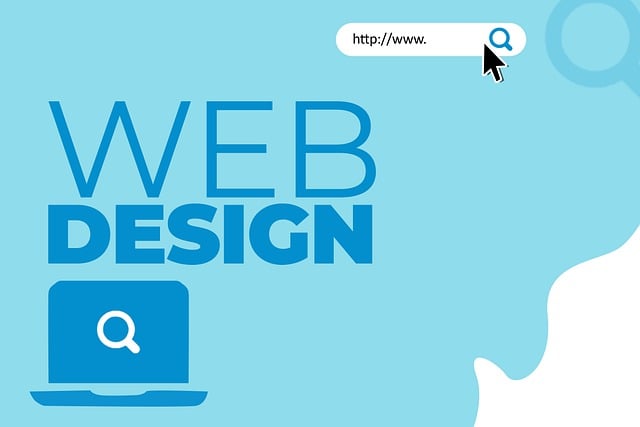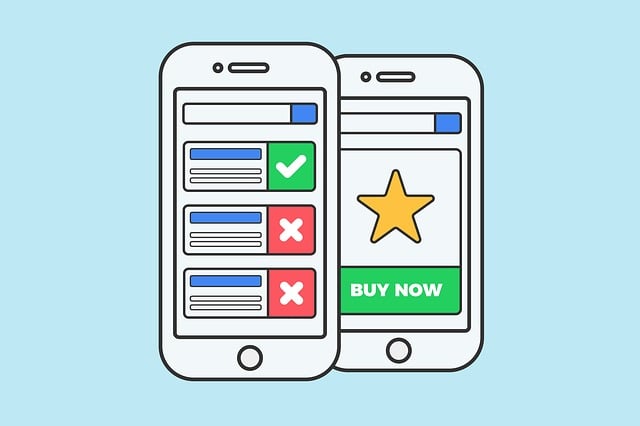User-friendly web design focuses on creating intuitive, accessible, and easy-to-navigate digital spaces. By understanding user needs, behaviors, and expectations, designers craft websites with enhanced user experience (UX), supporting accessibility for all, including those with disabilities. Key principles include simplicity, consistency, and clear visual hierarchy, leading to efficient task accomplishment and increased engagement. Accessibility is prioritized through adherence to Web Design standards and features catering to diverse users. Minimalism, clean layouts, and strategic design elements improve visual appeal and usability. Effective navigation systems guide users, while responsive design ensures optimal experiences across devices. User feedback mechanisms enhance interaction and inform design decisions through data-driven approaches. Iterative testing and refining ensure exceptional user experiences by addressing usability and accessibility concerns promptly.
In today’s digital landscape, user-friendly web design is paramount for creating engaging online experiences. This comprehensive guide explores essential principles and strategies for designing intuitive websites that cater to diverse users. From defining accessibility standards to implementing responsive layouts and incorporating effective feedback mechanisms, we delve into the key components that foster seamless navigation and enhance user satisfaction. Discover how simplicity, minimalism, and iterative testing empower web designers to craft exceptional digital destinations.
Understanding User-Friendly Web Design: Definition and Goals

User-friendly web design is a concept that focuses on creating digital spaces that are intuitive, accessible, and easy to navigate for all users. It involves understanding the needs, behaviors, and expectations of your target audience, then designing websites and applications with these insights in mind. The primary goals are to enhance user experience (UX), ensure accessibility for people with disabilities, and promote efficient information retrieval.
By prioritizing simplicity, consistency, and clear visual hierarchy, web designers can make interfaces that help users achieve their tasks without frustration or confusion. This approach not only improves user satisfaction but also drives engagement, increases conversion rates, and ultimately contributes to the success of any online platform in today’s competitive digital landscape.
Key Principles of Creating an Intuitive User Interface

Creating an intuitive user interface is a cornerstone of effective web design, ensuring users can effortlessly navigate and interact with a website. Key principles include simplicity and consistency. A clean layout with minimal clutter helps users focus on essential elements, guiding them through the site’s functionality. Consistent design patterns, such as using the same buttons, icons, and navigation menus throughout, foster familiarity, allowing users to predict where to find features and how to use them.
Furthermore, prioritizing user needs and tasks is paramount. Designing with a clear understanding of the target audience’s goals enables the creation of interfaces that directly support these objectives. Incorporating feedback mechanisms also plays a vital role in refining the interface over time, ensuring it remains intuitive and aligned with evolving user expectations in the ever-changing landscape of web design.
Designing for Accessibility: Ensuring Inclusivity Online

In modern web design, prioritizing accessibility is paramount. Creating websites and apps that are usable by people with disabilities isn’t just ethical; it’s essential for inclusive online experiences. By following Web Design standards and implementing features like keyboard navigation, alt text for images, and sufficient color contrast, designers can make their creations accessible to a wider audience. These considerations ensure that users relying on assistive technologies, such as screen readers or voice commands, can interact with digital content effectively.
Moreover, accessible web design goes beyond technical aspects. It involves considering diverse user needs, including those with visual, auditory, motor, or cognitive disabilities. Simple changes like providing clear and consistent navigation, offering alternative text for graphics, and allowing users to customize font sizes and color schemes significantly enhance usability. Embracing these practices not only benefits individuals with disabilities but also improves overall web experience by catering to a broader range of users.
The Role of Simplicity and Minimalism in Web Aesthetics

In the realm of web design, simplicity and minimalism play a pivotal role in creating an aesthetically pleasing and user-friendly experience. The concept revolves around stripping down unnecessary elements to focus on core functionalities, ensuring a clean and uncluttered interface. This approach enhances usability by guiding users’ attention towards essential content and actions, thereby reducing cognitive load. A minimalist design allows for better readability, faster loading times, and improved accessibility, making it particularly beneficial for mobile users with limited screen real estate.
By embracing simplicity, web designers can create a sense of sophistication and elegance. Clean lines, ample white space, and a thoughtful color palette contribute to an uncluttered visual hierarchy that invites users to explore the site effortlessly. This strategy not only improves user satisfaction but also aligns with modern design trends, where less is often considered more, making it a fundamental aspect of effective web design practices.
Effective Navigation Systems: Guiding Users Seamlessly

Effective navigation systems are a cornerstone of user-friendly web design. They act as a map, guiding users through the site’s vast landscape, ensuring they can find what they’re looking for quickly and effortlessly. Well-designed navigation should be intuitive, with clear labels and logical structure. This means organizing content in a hierarchical manner, using dropdown menus or categories to simplify complex sites, and providing breadcrumbs to help users understand their current location within the site.
A seamless navigation experience doesn’t just enhance user satisfaction; it also boosts retention rates. When users can navigate effortlessly, they’re more likely to explore deeper into the site, increasing the chances of them engaging with content and ultimately converting. In the competitive world of web design, a simple yet effective navigation system can be a game-changer, setting your website apart from its competitors.
Responsive Design: Adapting to Different Screens and Devices

In the realm of web design, ensuring a user-friendly experience across various devices is paramount. Responsive design is a key strategy that allows websites to adapt seamlessly to different screen sizes and resolutions, from desktops to tablets and smartphones. This approach leverages flexible layouts, images, and CSS media queries to deliver an optimal viewing experience regardless of the user’s hardware.
By adopting responsive design principles, web designers can create dynamic and engaging interfaces that cater to a diverse range of users. Whether it’s optimizing content for smaller screens or enhancing interactivity on larger displays, this adaptability ensures that web pages remain accessible, usable, and visually appealing across the entire digital landscape, thereby elevating the overall user experience in terms of Web Design.
User Feedback Mechanisms: Encouraging Interaction and Engagement

Incorporating user feedback mechanisms is an essential aspect of modern web design, as it fosters a sense of interaction and engagement between the website and its visitors. These mechanisms can take various forms, such as simple contact forms, rating systems, comment sections, or more interactive elements like polls and surveys. By providing users with a platform to voice their opinions, feedback, and suggestions, websites encourage active participation, creating a more dynamic and responsive online environment.
Well-designed user feedback systems not only help website owners understand their audience’s needs and preferences but also demonstrate a commitment to continuous improvement. This two-way communication loop allows designers and developers to make data-driven decisions, ensuring that the web design remains user-friendly, relevant, and aligned with the target audience’s expectations.
Testing and Iterating: Refining the User Experience

In the realm of web design, testing and iterating are essential processes for refining the user experience. As users interact with a website, gathering feedback becomes crucial to understanding their preferences, behaviors, and pain points. This iterative approach involves several steps, from usability testing to A/B testing, where designers observe user actions, gather qualitative and quantitative data, and make informed decisions. By continuously refining the design based on real-world interactions, web designers can create interfaces that are intuitive, accessible, and aligned with user expectations.
Iterative development allows for quick adjustments, ensuring that the final product meets high standards of usability. Designers can identify and fix issues early in the development cycle, preventing problematic features from becoming ingrained in the website’s architecture. This process promotes a more inclusive design philosophy, where the end result is not merely an aesthetically pleasing webpage but a seamless digital experience tailored to the needs and preferences of its intended audience, ultimately enhancing user satisfaction and engagement.
